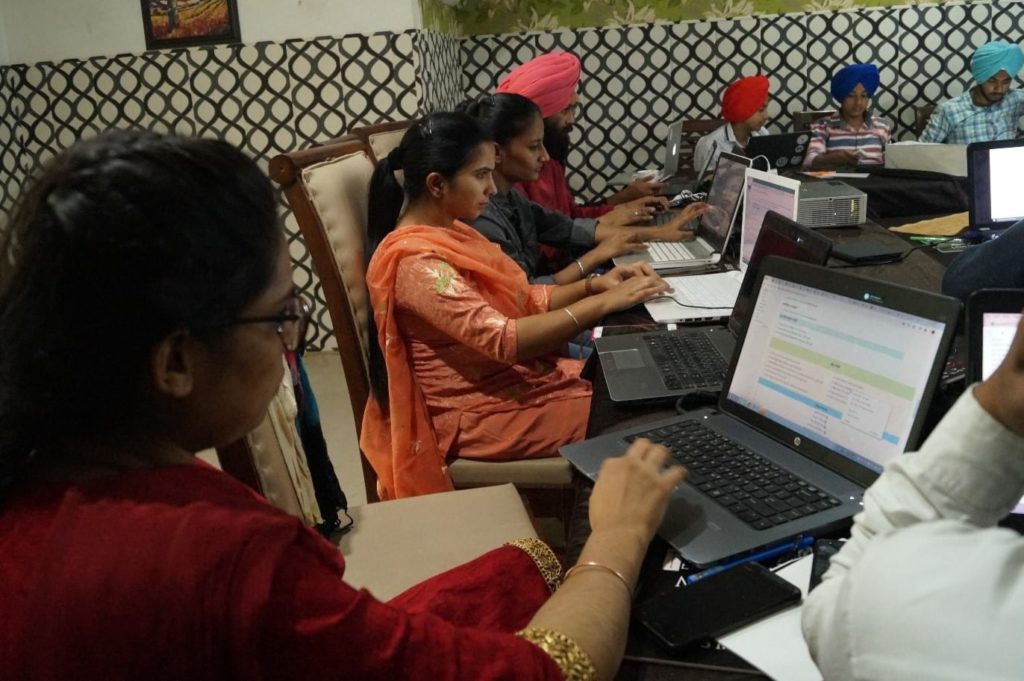MUMBAI – When McKinsey & Company issued its report on economic growth and empowerment in India in 2014, one of its most salient recommendations was the need to more fully realize the potential of its human capital in order to sustain the magnitude of growth the country is experiencing.
Digitizing India
Of all the resources available for the growth of India, its citizens may easily be the country’s most abundant. Its human resources are certainly the most valuable.
In India, as in any emerging country, the gap between the potential and the current status of its population is often one of the biggest obstacles to economic success and governance.
To that end, the Indian government has joined with partners to drive the Digital India Initiative. Digital India operates under the auspices of the Government of India’s Ministry of Electronics & Information Technology. The initiative is heralded as a program “with a vision to transform India into a digitally-empowered society and knowledge economy.”
Although the initial program, successfully launched in 2006, had 31 Mission Mode Projects covering a wide range of domains underway, the Ministry discovered that the overall vision lacked vital interconnectivity. That is, where the technical advances had been put into place, the people – especially those in rural villages – were often not aware of those programs nor did they understand how or where to take advantage of them.
On another scale, many government databases were not interconnected. Compartmentalization has been an obstacle for business since data has become digital, so the issue facing the government is completely understandable.
To describe the problem using a corporate environment, we would be describing a company where each department – finance, production, purchasing, engineering, warehousing, shipping, and sales – each had their own, unrelated databases and were unable to utilize the data from the other departments. Exacerbating the situation, imagine that fully half of the employees who needed it had no access to the data at all.
Bottom line: Data is available, but access is limited. Unusable data is like a new pair of socks sitting in the back of a dresser drawer. They are really nice, but they are not serving their intended purpose.
Adding PUKAR
The Government has enlisted the services of Partners for Urban Knowledge Action and Research to help provide digital awareness, literacy, and access to people in rural areas. They hope to connect them directly to government services that are available online. They are, in effect, pulling the new socks out of the drawer.
The partnership has already placed computer kiosks in 14 villages. In addition, they have trained computer literate young people (called e-sevaks) to come alongside the villagers to teach them how to use the kiosks to access essential government services. India Spends reported this week that “as of October 2018, 64 (trainers) were active in 31 villages where . . . they had helped more than 30,000 villagers access information regarding government services.”
The level of criticality for these people can be illustrated by understanding that, financially
“Villagers have saved a total of Rs 4.8 crore by accessing these kiosks and avoiding trips to the taluka office–about Rs 1,600 for each of the 30,000 users, more than the current monthly minimum wage of Rs 1,525 for a rural agricultural worker.”
There are many other far-reaching benefits of the Digital India Initiative, not the least of which is that over 1,800 tribal residents have already learned how to access their property records online.
To date, more than 360 women have become “digitally capable” through the Government partnership with PUKAR. Many of the younger girls in the program are participating in the new Going Online as Leaders (GOAL) program that will enable them to become digital leaders in their communities.
The mission has provided digital training to more than 500 school children.
The Digital India Initiative has not only given tribal villagers access to their identity cards, birth certificates, and land documents but it also allows them to pay bills for government services online and the ability to revise incorrect information in the databases.
Years from now we should expect to look back at the Digital India Initiative as one of the greatest advances that have enabled and empowered India’s most abundant resource to become its most valuable.
To read more news on India on Missions Box, go here.
Sources:
- McKinsey & Company, India’s path from poverty to empowerment
- India Spend, How A Tribal Village’s Digital Push Empowered Its Women
- Digital India, Power to Empower
- PUKAR, E-Sevak Initiative for Better Governance
Image Source:
- Satpal Dandiwal [CC BY-SA 4.0]
